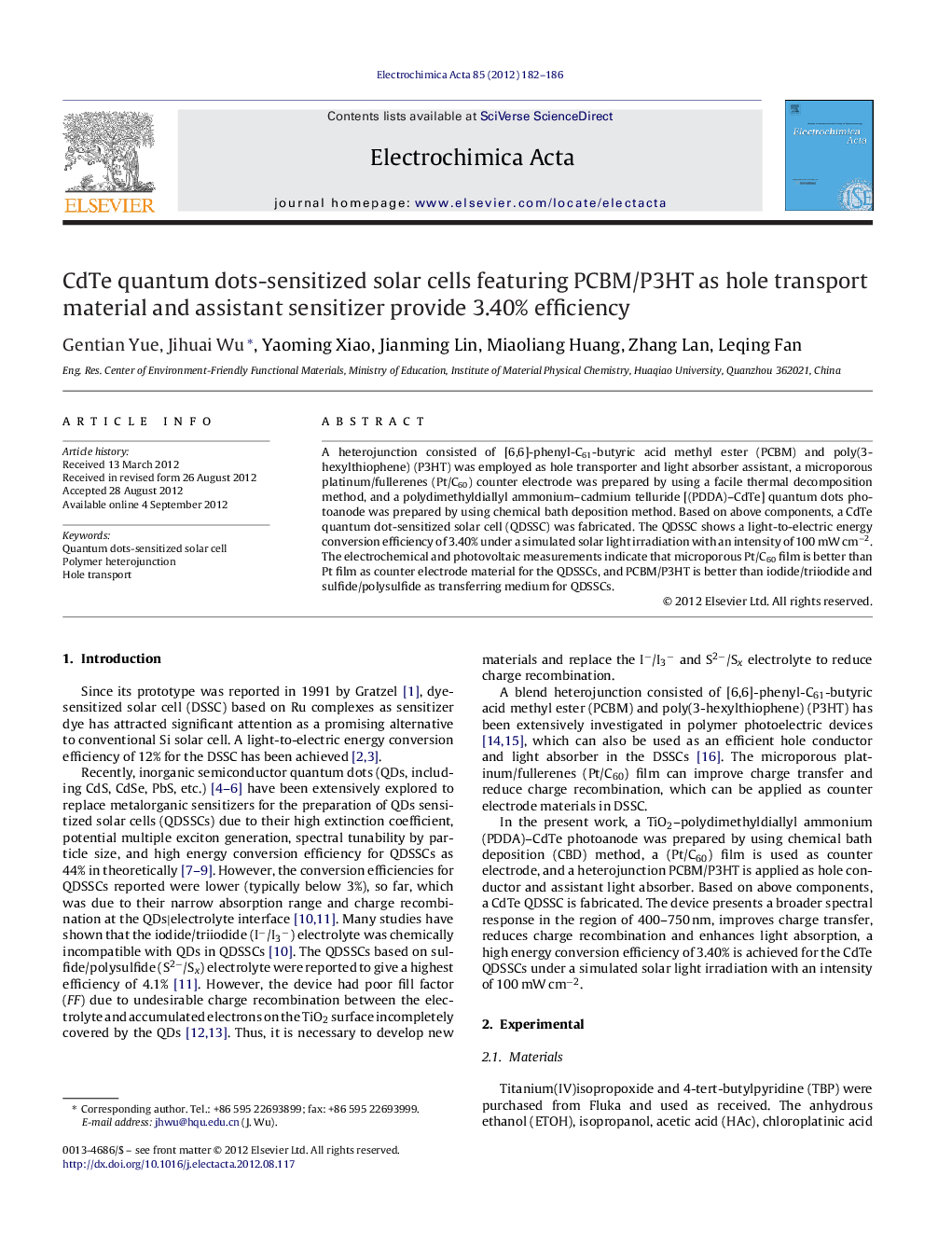| Article ID | Journal | Published Year | Pages | File Type |
|---|---|---|---|---|
| 187790 | Electrochimica Acta | 2012 | 5 Pages |
A heterojunction consisted of [6,6]-phenyl-C61-butyric acid methyl ester (PCBM) and poly(3-hexylthiophene) (P3HT) was employed as hole transporter and light absorber assistant, a microporous platinum/fullerenes (Pt/C60) counter electrode was prepared by using a facile thermal decomposition method, and a polydimethyldiallyl ammonium–cadmium telluride [(PDDA)–CdTe] quantum dots photoanode was prepared by using chemical bath deposition method. Based on above components, a CdTe quantum dot-sensitized solar cell (QDSSC) was fabricated. The QDSSC shows a light-to-electric energy conversion efficiency of 3.40% under a simulated solar light irradiation with an intensity of 100 mW cm−2. The electrochemical and photovoltaic measurements indicate that microporous Pt/C60 film is better than Pt film as counter electrode material for the QDSSCs, and PCBM/P3HT is better than iodide/triiodide and sulfide/polysulfide as transferring medium for QDSSCs.
► A CdTe QD-sensitized solar cell was fabricated by using PCBM/P3HT heterojunction. ► The QDSSC shows a light-to-electric energy conversion efficiency of 3.40%. ► Microporous Pt/C60 film is better than Pt film as counter electrode for the QDSSC. ► PCBM/P3HT is better than I−/I3− and S2−/Sx as transferring medium for the QDSSC.
